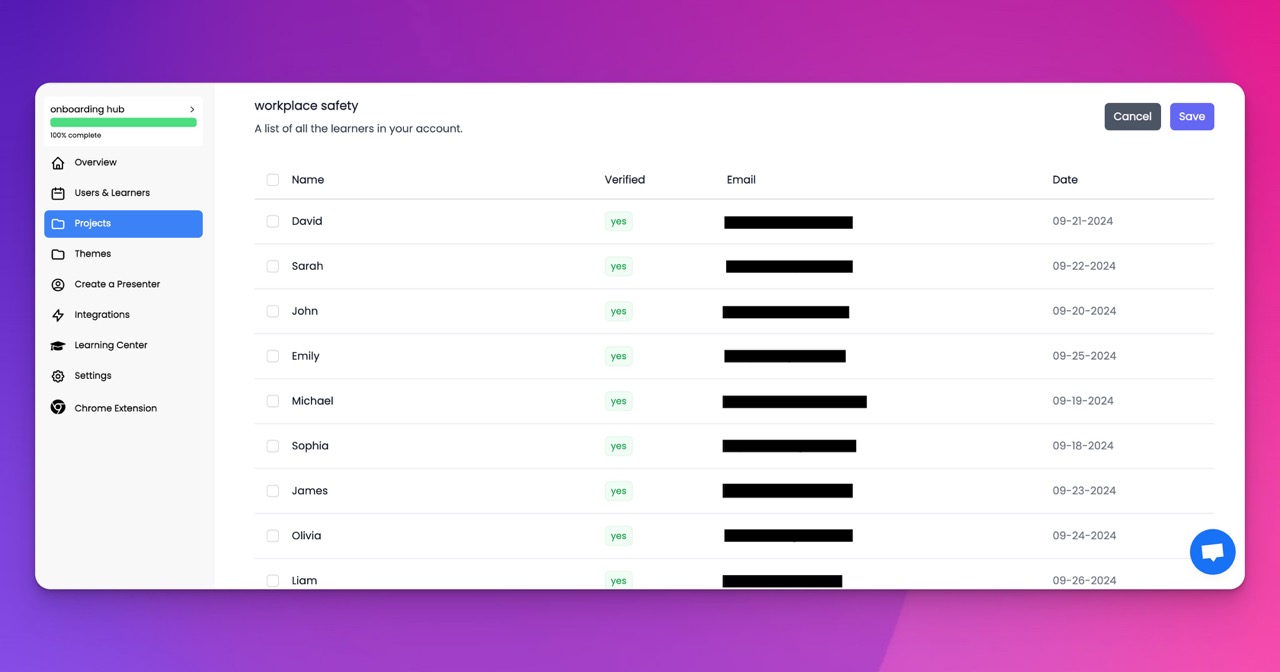🎉 Trainday now integrates with Zendesk and Hubspot 🎉 Trainday now integrates with Zendesk and Hubspot 🎉 Trainday now integrates with Zendesk and Hubspot
🎉 Trainday now integrates with Zendesk and Hubspot
🎉 Trainday now integrates with Zendesk and Hubspot
Contact
"Engaging Virtual Training Ice Breaker Activities: Unleashing The Power Of AI Avatars For Enhanced Learning Experience"
Engaging Virtual Training Ice Breaker Activities: Unleashing the Power of AI Avatars for Enhanced Learning Experience
In today's digital era, virtual training has become a norm for organizations worldwide. With the rise of remote work, companies are seeking innovative ways to engage employees during virtual training sessions. One effective technique that has gained popularity is the use of AI avatars. These virtual assistants not only add an element of fun and interactivity but also enhance the overall learning experience.
Ice breaker activities are an essential part of any training session as they help participants feel comfortable, establish rapport, and promote collaboration. Traditional ice breakers often involve face to face interactions, but with the advancement of AI technology, virtual ice breakers have become just as effective.
Introducing AI avatars into virtual training sessions can transform the way participants engage with each other and the content. These avatars are created using artificial intelligence algorithms, resulting in lifelike virtual characters that can interact with participants in real time. By leveraging AI avatars, trainers can unleash the power of technology to create an immersive and engaging learning experience.
Here are some innovative ice breaker activities that utilize AI avatars for enhanced participant engagement:
1. Avatar Introductions: Instead of the usual round of introductions, allow participants to introduce themselves through their AI avatars. Each participant can customize their avatar's appearance, voice, and personality traits. This activity not only breaks the ice but also encourages creativity and self expression.
2. Virtual Team Building Games: Divide participants into teams and facilitate interactive team building games using AI avatars. Participants can collaborate with their avatars to solve puzzles, complete challenges, or participate in virtual scavenger hunts. These games not only foster teamwork but also help participants develop problem solving and communication skills.
3. Role Playing Simulations: Create simulated scenarios using AI avatars where participants can practice real life situations relevant to their training. For example, in a customer service training session, participants can engage with AI avatars representing different customer personas. This activity allows participants to apply their learning in a safe and controlled environment.
4. Virtual Reality Tours: Combine AI avatars with virtual reality technology to provide immersive learning experiences. Participants can explore virtual environments guided by AI avatars, allowing them to visit different locations without leaving their homes. This activity is particularly effective in training programs that require field visits or site inspections.
5. Quiz Competitions: Engage participants in interactive quizzes facilitated by AI avatars. Participants can compete individually or in teams, answering questions related to the training content. AI avatars can provide immediate feedback and track participants' progress, making the learning experience more personalized and rewarding.
The use of AI avatars in virtual training not only adds a touch of novelty but also enhances participant engagement and knowledge retention. These virtual assistants can create a sense of presence and interaction, making participants feel more connected and immersed in the training process.
However, it is important to remember that AI avatars should complement, not replace, human trainers. The human touch is still crucial in delivering effective training sessions. AI avatars should be used as facilitators, enhancing the learning experience rather than replacing the role of trainers.
In conclusion, leveraging AI avatars for ice breaker activities in virtual training sessions can significantly enhance participant engagement and overall learning experience. These avatars bring a new dimension of interactivity, personalization, and fun to the training process. By embracing the power of technology, organizations can create a dynamic and immersive virtual training environment that enhances knowledge retention and skill development.
Accelerate Compliance.
Deliver OSHA-Ready Courses Instantly.
Empower your team with data-driven training solutions tailored to your industry's safety standards. Stay compliant, reduce risks, and boost productivity with AI-powered course creation.
